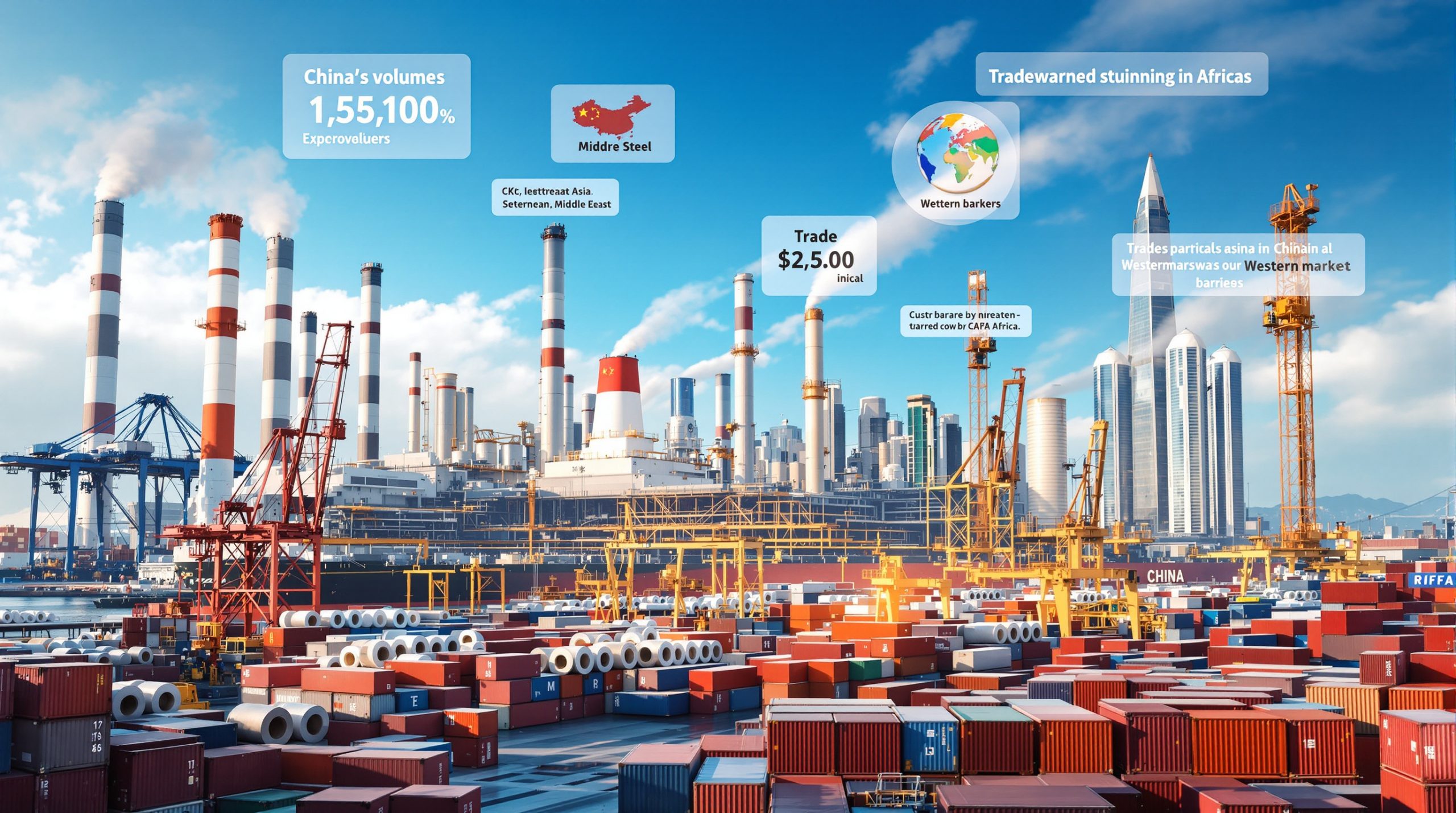What's Driving the Recent Platinum Price Rally?
Supply Constraints Reshape the Market
The platinum market is experiencing a significant transformation driven by substantial supply constraints from South Africa, the world's primary platinum producer. South African operational platinum shafts have drastically declined from 81 in 2008 to only 53 currently, creating remarkable pressure on global supply chains. This 35% reduction in operational capacity represents a fundamental shift in the industry's production capabilities.
Production disruptions have been particularly severe in recent months, with South African miners—who account for over 70% of global platinum supply—implementing strategic cutbacks in response to previously unsustainable price levels. These reductions have been compounded by growing infrastructure challenges, including electricity supply instability and water availability issues.
Many South African platinum mines are severely undercapitalized with increasingly shortened life expectancies, resulting in a structurally shrinking primary PGM (Platinum Group Metals) supply. Industry analysts project this contraction will continue, with the current 53 operational shafts expected to decline further in coming years, potentially creating more South African beneficiation opportunities.
Demand Factors Fueling Price Growth
While supply constraints form one side of the price rally equation, surprising strength in demand has created a perfect storm for platinum prices. Chinese demand has emerged as a critical driver, with platinum increasingly attractive as an alternative to historically high-priced gold jewelry.
The automotive sector, despite ongoing electrification narratives, continues to maintain robust platinum demand. This resilience contradicts earlier predictions that electric vehicle adoption would rapidly erode traditional automotive catalyst requirements. Tightening emissions standards globally have actually increased platinum loading in conventional vehicles, while hybrid vehicle growth has created entirely new demand channels.
Investment demand has shown remarkable growth as financial markets reassess platinum's fundamental value proposition. The metal's historical undervaluation relative to gold price record highs has attracted both institutional investors seeking portfolio diversification and retail investors looking for inflation hedges with industrial applications.
How Significant is the Current Price Movement?
Breaking Historical Price Patterns
The current platinum rally represents a decisive break from a decade of price suppression. Platinum prices surged 36% during the second quarter of 2025 alone, according to Reuters reporting via Kitco News. This dramatic appreciation has fundamentally altered market sentiment after years of stagnation.
Prices climbing above $1,400 per ounce mark a significant psychological threshold for investors who had grown accustomed to platinum trading at substantial discounts to gold. This price action has triggered renewed analysis of platinum's fundamental supply-demand dynamics, with many institutional investors conducting fresh evaluations of the metal's medium-term prospects.
The rally's significance extends beyond mere percentage gains—it represents a potential structural revaluation of platinum's position within the precious metals complex. For much of the past decade, platinum traded at historically unusual discounts to gold, contrary to its traditional premium pricing based on greater rarity and dual precious/industrial applications.
Structural Market Deficits Supporting Higher Prices
The current price rally appears well-supported by fundamental market conditions rather than speculative excess. Industry analysis points to persistent annual supply shortfalls through at least 2028, creating an environment where prices must rise to either stimulate additional production or suppress marginal demand.
This deficit situation has particular staying power given the limited development pipeline for new platinum projects. Unlike some commodities where higher prices can quickly incentivize new production, platinum mining requires substantial capital investment and multi-year development timelines, creating an extended period where supply struggles to respond to price signals.
Market observers note that demand has shown remarkable resilience despite rising prices, suggesting limited price elasticity across key consumption categories. This indicates that substantially higher prices may be required to balance supply and demand through demand destruction rather than supply growth.
Why Are Mining Companies Still Struggling Despite Rising Prices?
Operational Challenges Limiting Profitability
The platinum price rally has not translated into proportional profit improvements for mining companies, highlighting persistent operational challenges throughout the sector. Northam Platinum, a major producer, reported a 14.4% drop in annual profit despite achieving record sales volumes, according to their financial results released in August 2025. Their headline earnings per share fell from 4.45 rand to 3.81 rand year-over-year, reflecting substantial cost pressures.
Mining costs have surged across the industry, eroding the benefits of higher metal prices. These cost increases stem from multiple factors including escalating energy prices, labor inflation, and declining ore grades requiring more extensive processing. The combination of these factors has kept overall profit margins constrained despite the substantial price rally.
Northam CEO Paul Dunne provided important context when he stated that while "recent price appreciation is offering some relief to the PGM sector," current prices remain "still not yet at levels that will support sustainable mining across the industry and certainly not the much-needed development of new operations." This assessment underscores the gap between current prices and truly sustainable production economics.
Infrastructure and Investment Limitations
The platinum mining sector faces significant infrastructure challenges that limit its ability to capitalize on improved prices. South Africa's ongoing electricity supply challenges create both direct operational disruptions and indirect cost increases through backup power requirements and irregular production schedules.
Water availability has emerged as another critical constraint, with several major mining regions experiencing increasing competition for limited water resources. Climate change impacts are exacerbating these challenges, creating additional operational uncertainty.
Perhaps most significantly, the extended period of low platinum prices from early 2023 through early 2025 severely restricted capital investment throughout the sector. Mining companies prioritized survival over expansion, creating a situation where even with improved prices, operational capacity remains limited by years of deferred maintenance and delayed development projects.
What Does This Mean for the Future of Platinum Supply?
Industry Consolidation and Production Outlook
The platinum mining industry appears to be entering a period of strategic rationalization rather than production expansion. Despite improving prices, industry leaders are explicitly cautioning against overreaction. Impala Platinum CEO Nico Muller warned against "flooding the market with new ounces," noting the sector still faces major threats despite slower-than-projected electric vehicle adoption.
This cautious approach reflects a deeper understanding of platinum's supply-demand balance and price sensitivity. Historical experience has shown that even modest supply increases can trigger disproportionate price responses, potentially undermining the current recovery.
Industry consolidation trends appear increasingly likely as companies seek operational efficiencies and resource optimization. Smaller, higher-cost operations may become acquisition targets for larger producers looking to expand without developing entirely new projects. This consolidation could further concentrate production among a smaller number of major players.
New Project Economics Under Current Pricing
The development of new platinum mining projects faces significant economic hurdles despite improved prices. Current price levels, while substantially higher than recent years, remain insufficient to justify major greenfield development given escalating capital costs.
New mining operations typically require capital expenditures exceeding $1 billion before producing their first ounce of platinum. At current prices, the risk-adjusted returns on such investments remain marginal for many potential projects, especially when considering the industry's historical price volatility.
Financing represents another substantial challenge for potential new developments. Capital providers remain cautious about long-term platinum price assumptions after the extended period of suppression, creating higher hurdle rates for project approval. This financing constraint disproportionately impacts junior miners who lack the balance sheet strength of established producers.
How Are Demand Patterns Evolving During This Rally?
Automotive Sector Developments
The automotive sector, traditionally platinum's largest demand source, continues to show surprising resilience despite the ongoing electric vehicle transition narrative. Several factors contribute to this continued strength in automotive platinum demand.
Tightening emissions regulations globally have increased the platinum loading requirements for conventional internal combustion engine vehicles. Even as unit sales of such vehicles plateau or decline in some markets, the per-vehicle platinum content has increased, helping maintain overall demand.
The increasing substitution of platinum for palladium in gasoline autocatalysts represents another positive demand driver. This substitution process, driven by palladium's historical price premium, has accelerated as automotive manufacturers seek cost optimizations while maintaining emissions compliance.
The hybrid vehicle segment, which combines internal combustion engines with electric propulsion, continues to show substantial growth. These vehicles require platinum-based catalysts for their conventional engine components while offering consumers a transition path toward electrification.
Emerging Industrial Applications
Beyond traditional automotive applications, platinum is finding expanding roles in several emerging industrial applications. Northam CEO Paul Dunne specifically highlighted growing demand for ruthenium (a platinum group metal) being driven by data storage applications.
The green hydrogen sector represents another significant growth vector for platinum demand. Platinum catalysts play a critical role in both hydrogen production through electrolysis and its utilization in fuel cells. As governments globally invest in hydrogen infrastructure to meet decarbonization goals, this application could substantially increase platinum demand.
Medical and pharmaceutical applications continue to expand platinum usage, with the metal's biocompatibility and unique properties making it valuable for specialized medical devices and cancer treatments. These applications typically have limited price sensitivity, providing demand stability even during price rallies.
What Are the Investment Implications of the Platinum Rally?
Portfolio Positioning Considerations
The platinum rally creates several distinct investment considerations for different market participants. For precious metals investors, platinum's improving price trend coupled with its persistent discount to gold presents an interesting relative value proposition.
Platinum's dual nature as both a precious and industrial metal creates different correlation patterns compared to gold, potentially offering portfolio diversification benefits. During inflationary periods with strong industrial activity, platinum has historically outperformed gold, though with higher volatility.
For ESG-focused investors, platinum presents a complex proposition. While its critical role in emissions control technology and potential contribution to the hydrogen economy align with environmental goals, the energy-intensive nature of platinum mining creates offsetting considerations.
Risk management remains essential given platinum's historical volatility. Position sizing should reflect both the metal's promising fundamental outlook and its tendency toward sharp price movements as relatively small changes in supply or demand can trigger significant price responses.
Mining Equity Performance Analysis
Mining equities offer an alternative approach to platinum exposure with potentially different risk-reward characteristics than direct metal investment. These stocks typically provide operational leverage to metal prices, potentially outperforming during sustained rallies but underperforming during corrections.
Current financial results suggest mining companies have yet to fully translate higher platinum prices into improved profitability. Northam's recent profit decline despite the price rally highlights the cost pressures facing producers. This situation creates potential for significant margin expansion if prices continue rising while costs stabilize.
Balance sheet strengthening represents a likely capital allocation priority for mining companies benefiting from improved prices. Many producers accumulated substantial debt during the extended low-price environment and will likely prioritize debt reduction before dividend increases or aggressive capital expenditures.
How Might the Rally Impact the Broader PGM Market?
Interrelationships Between Platinum Group Metals
The platinum rally has significant implications for the broader platinum group metals (PGM) complex, which includes palladium, rhodium, ruthenium, iridium, and osmium. These metals are typically mined together, creating complex supply interdependencies.
Price relationships between platinum and palladium are particularly important given their interchangeability in some applications. The historical palladium premium to platinum has driven substitution trends, but this dynamic could shift if platinum's relative strength continues.
Recycling economics play an important role in overall PGM supply dynamics. Higher platinum prices improve the economics of recycling operations, potentially increasing secondary supply through increased collection rates and processing of previously uneconomic materials.
Market Sentiment and Speculative Positioning
The platinum market appears to be experiencing a significant sentiment shift after years of negative positioning. Improving price action has attracted both investment and speculative interest, creating potential for self-reinforcing momentum as technical indicators turn positive.
The relatively small size of the platinum market compared to gold creates the potential for pronounced price impacts from changing investment flows. Even modest allocations from large institutional investors can significantly influence available supply.
Physical platinum investment products including coins, bars, and ETFs provide different exposure profiles for various investor types. Recent price action has reportedly increased retail interest in physical platinum products, though comprehensive data lags the market.
FAQ: Platinum Price Rally Impact
Will the platinum price rally be sustainable long-term?
The sustainability of the platinum rally depends on the persistence of current supply constraints and continued demand resilience. With operational South African platinum shafts having declined by 35% since 2008 (from 81 to 53) and limited new project development in the pipeline, structural supply limitations appear likely to continue for several years.
Industry leaders including Northam's Paul Dunne have indicated that tight PGM supply conditions are likely to persist in the medium term. However, investors should remain aware that platinum has historically exhibited significant price volatility, and corrections within longer-term uptrends remain possible.
The demand side of the equation remains more uncertain. While automotive demand has shown resilience despite electrification narratives, the pace of EV adoption represents a significant long-term consideration. Emerging applications in green hydrogen and data storage provide potential offset to any future automotive demand erosion.
How are mining companies responding to higher platinum prices?
Mining companies are demonstrating notable caution despite the 36% price rally in Q2 2025. Industry leaders are explicitly warning against production expansion that could undermine the improving market balance. Impala Platinum CEO Nico Muller specifically cautioned against "flooding the market with new ounces."
Financial results indicate mining companies continue to face significant operational challenges despite higher prices. Northam Platinum reported a 14.4% drop in annual profit despite record sales volumes, with headline earnings per share falling from 4.45 rand to 3.81 rand year-over-year.
Current priorities appear focused on operational optimization rather than expansion. Companies are working to address infrastructure challenges, improve operational efficiency, and strengthen balance sheets rather than aggressively developing new production capacity.
What role is China playing in the platinum market dynamics?
China has emerged as a crucial demand driver in the current platinum market, with imports increasing substantially in early 2025 according to industry reports. This demand growth stems from multiple factors including increased automotive production, industrial applications, and jewelry demand.
Chinese jewelry demand has shown particular strength as consumers face historically high gold prices. Platinum's relative affordability compared to gold has made it an attractive alternative for price-sensitive consumers, stimulating new demand from this traditionally important sector.
Industrial demand from China includes both traditional applications and emerging technologies. The country's push toward hydrogen infrastructure development creates potential for substantial new platinum demand through both electrolysis and fuel cell applications.
How does the electric vehicle transition affect platinum demand?
The electric vehicle transition presents a complex picture for platinum demand rather than a simple negative relationship. While battery electric vehicles eliminate the need for traditional catalytic converters, several factors moderate the impact of this transition.
The actual pace of global EV adoption has proven slower than many earlier projections suggested. Conventional and hybrid vehicles continue to dominate global sales, maintaining a substantial demand base for platinum catalysts.
Emissions regulations for remaining internal combustion engines have continued to tighten, increasing the platinum content per vehicle and partially offsetting unit sales declines in some markets. This regulatory trend appears likely to continue as governments pursue air quality improvements.
Hydrogen fuel cell vehicles, which utilize substantial platinum in their powertrain systems, represent a potential growth vector within the broader electrification trend. While currently a small market segment, fuel cell technology continues to advance with particular relevance for heavy-duty transportation applications. The EV impact on mining extends well beyond just platinum markets.
Further Exploration of Platinum Market Dynamics
Geological Factors Influencing Supply
The geological characteristics of platinum deposits create significant production challenges beyond simple economic considerations. PGM deposits typically occur at great depths, requiring extensive infrastructure and presenting substantial safety considerations.
South Africa's Bushveld Complex, which contains approximately 80% of global platinum reserves, features narrow reef mining conditions that limit mechanization opportunities. This labor-intensive mining approach contributes to both cost pressures and production inflexibility.
Ore grades have declined in many established mining operations as higher-grade zones become depleted. This grade deterioration increases both the energy and processing requirements per ounce of platinum produced, contributing to the industry's cost inflation challenges.
Regulatory and Social Considerations
South Africa's mining regulatory environment adds complexity to platinum production decisions. The country's Mining Charter requirements regarding ownership structures, community development, and labor practices influence both operational approaches and investment decisions.
Community relations represent another critical factor for platinum producers. Mining operations require social license to operate, with increasing expectations regarding local economic development, environmental management, and infrastructure contributions.
Labor relations historically presented challenges for South African platinum producers, though recent years have seen improved stability. Wage negotiations and working conditions remain important considerations for production consistency and cost management.
Technological Developments Affecting Demand
Advanced driver assistance systems and eventual autonomous driving capabilities could influence platinum demand through their impact on vehicle ownership models. Shared mobility solutions might reduce total vehicle production while increasing per-vehicle utilization and emissions control requirements.
Material science advances continue to seek catalyst optimization that could reduce platinum requirements per application. However, these efficiency improvements typically evolve incrementally rather than through disruptive breakthroughs, providing time for supply adjustments.
The semiconductor industry represents an emerging demand source for platinum group metals, particularly ruthenium. As data storage and processing requirements continue exponential growth, specialty materials demand from this sector could provide important diversification from traditional automotive applications.
The platinum market's current trajectory suggests a period of fundamental rebalancing after years of suppressed prices and constrained investment. While challenges remain for both producers and consumers adapting to higher price levels, the structural supply limitations and evolving demand patterns appear likely to support a higher price environment than the previous decade. The platinum price rally impact is part of broader mining industry evolution that will continue to reshape metal markets.
Want to Be Alerted to the Next Major Mineral Discovery?
Discovery Alert's proprietary Discovery IQ model instantly identifies significant ASX mineral discoveries, providing actionable trading opportunities before the broader market. Visit our discoveries page to see how historic discoveries have generated substantial returns, and begin your 30-day free trial today.




